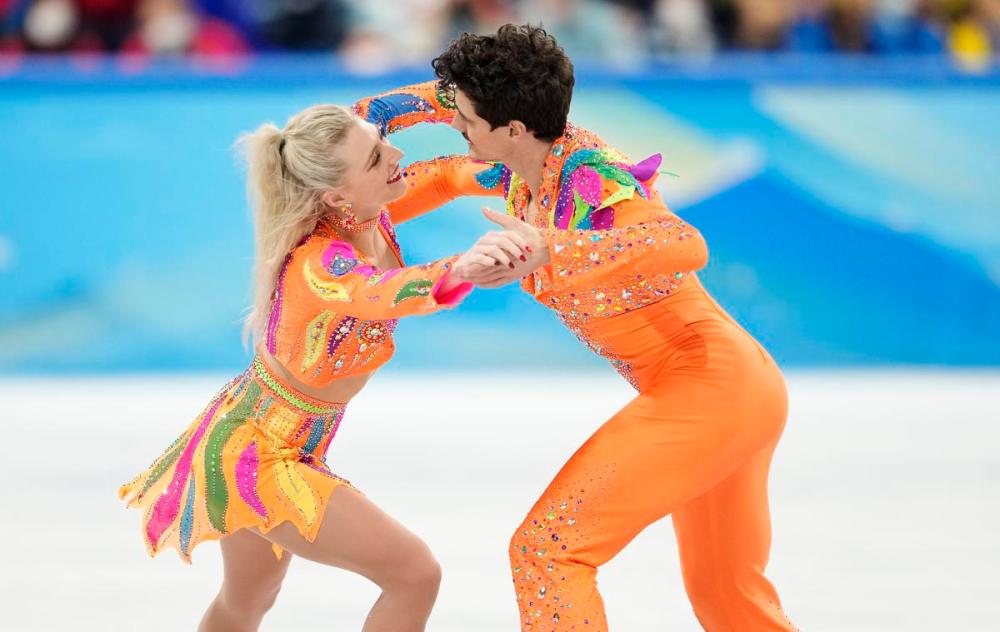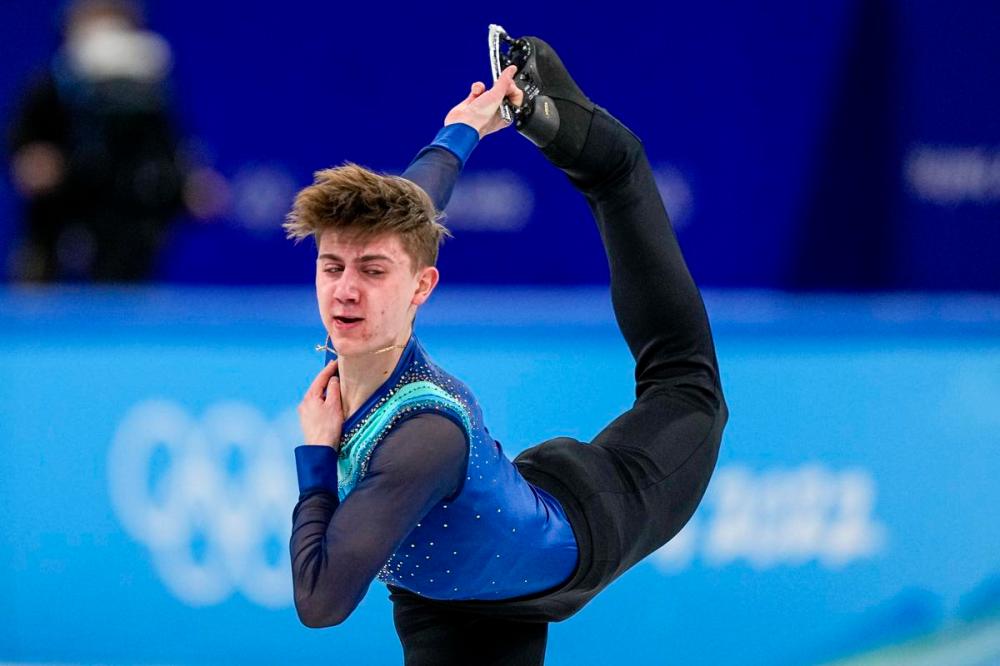With Keegan Messing missing, rebuilding Canadians on outside looking in after team figure skating openers
Advertisement
Read this article for free:
or
Already have an account? Log in here »
To continue reading, please subscribe:
Monthly Digital Subscription
$1 per week for 24 weeks*
- Enjoy unlimited reading on winnipegfreepress.com
- Read the E-Edition, our digital replica newspaper
- Access News Break, our award-winning app
- Play interactive puzzles
*Billed as $4.00 plus GST every four weeks. After 24 weeks, price increases to the regular rate of $19.00 plus GST every four weeks. Offer available to new and qualified returning subscribers only. Cancel any time.
Monthly Digital Subscription
$4.75/week*
- Enjoy unlimited reading on winnipegfreepress.com
- Read the E-Edition, our digital replica newspaper
- Access News Break, our award-winning app
- Play interactive puzzles
*Billed as $19 plus GST every four weeks. Cancel any time.
To continue reading, please subscribe:
Add Winnipeg Free Press access to your Brandon Sun subscription for only
$1 for the first 4 weeks*
*$1 will be added to your next bill. After your 4 weeks access is complete your rate will increase by $0.00 a X percent off the regular rate.
Read unlimited articles for free today:
or
Already have an account? Log in here »
Hey there, time traveller!
This article was published 04/02/2022 (1336 days ago), so information in it may no longer be current.
BEIJING Staying positive about testing negative.
That was the frame of mind for Keegan Messing, who got the COVID hook while the rest of Team Canada boarded their charter flight to China for the Winter Olympics last week.
While it came as a “say what?” surprise for the Canadian men’s figure skating champion, he was always likely the most at risk for infection, given that he had to fly commercial and cross a frontier — from his home in Anchorage, Alaska, which has no certified testing facility, to Vancouver, where the rest of the Canadian squad mustered — before reorienting for the Far East.

Somewhere in his travels and travails, the 30-year-old contracted the virus. He tested positive when swabbed for the transpacific leg of his odyssey, 96 hours in advance of departure, as per the rules. As of early Friday, he’d had two negative results, provisionally good enough for a clearance certificate to get on another aircraft, though he still required a third and fourth supplemental negative test outcome.
This is our pandemic world, and COVID doesn’t give a toss about the Olympics.
By the end of the day, Messing was on a plane, heading for the Games via Montreal. He will not be available for the men’s long skate portion of the team event Sunday, but he is expected to be in Beijing in time to compete in the men’s short program in the individual competition Tuesday.
It was quite obvious on Day 0 that the figure skating platoon missed Messing’s presence in the team event, which got rolling hours before the opening ceremony Friday and will unspool over two more days, Sunday and Monday.
This is a stupidly complicated schedule. And a dopey event, to be honest. It’s only been on the Games menu since Sochi and devalues medals, if you ask me. But Canada is defending Olympic gold, won by Tessa Virtue and Scott Moir, Meagan Duhamel and Eric Radford, Patrick Chan, Kaetlyn Osmond and Gabrielle Daleman — all but Daleman have gone down the retirement road as figure skating in Canada tried to straddle the old and the new, which isn’t a particularly happy medium.
Team gold redux was always out of the question in Beijing. Any podium finish would have been a stretch, even if exquisite performances were turned in all around and other top teams cocked up and Messing was in the mix.
That would be a no and a no and a no.
By end of the day — after the men’s short program, the ice dance rhythm and the pairs short — Canada was sixth among 10 countries and in danger of not making the top-five cut to qualify for the free skate conclusion. The U.S. is the intermediate leader, followed by the Russian Olympic Committee — we’ll just call them Russia — and China.
Roman Sadovsky, Canada’s No. 2 male, had a shaky debut, two-footing his opening quad salchow, turned into a triple anyway, then over-rotating on the triple lutz front end of his combination, with a double toe instead of a triple toe at the back end. Eighth place, with a score of 71.06. Three-time world champion Nathan Chen, from the U.S., was miles ahead at 111.71, just 0.11 short of the world record held by defending champion Yuzuru Hanyu of Japan, who’s not in the team event. He isn’t even in Beijing yet.
“Kind of disappointing, honestly,” said Sadovsky, a 23-year-old Torontonian. “The quad salchow is a comfort jump for me. It was very successful this season. There was just a slight mishap on the takeoff that didn’t allow me to pull in.”
To be fair, Sadovsky hadn’t expected to be named to the team event and only got the news of his emergency deployment the night before. Had he talked to Messing? “I haven’t really been in touch with him. We’re not that close, to be honest.”
With just three points in the kitty — awarded by ranking — Canada was looking at a rock-face climb to rejoin the upper half. Ice dancers Piper Gilles and Paul Poirier, world bronze medallists, were energetic and splashy as usual, in matching his and her tangerine costumes while skating to an Elton John medley, but they were off the best they’ve shown this season, shedding technical points on twizzles and a step sequence, for a score of 82.72. Not that they sounded discontented afterward, with Poirier insisting that, nope, that wasn’t a frown on his face as the music ended.
“Absolutely not. It was probably my tired face.”
The rhythm dance is 2 1/2 minutes long.
“We were really proud of our performance today,” Poirier said. “It was really settled, we didn’t force anything. Just felt really happy to be back on Olympic ice.”

Like Messing, Gilles and Poirier were in Pyeongchang but never got a sniff at the team event because the veteran gang had drawn a bead on gold, had a collective strategy for the thing, and there was no room in the boat for Olympic arrivistes.
A last minute about-face by Chinese authorities has permitted some fans access to the venues for competitions. About 250 spectators were present Friday at the Capital Indoor Stadium, and still they didn’t make as much noise as the Canadian contingent surrounding the skaters in their kiss-and-cry pod and more Canadian athletes in the stands.
“We just did nationals with nobody and you could hear a pin drop,” Gilles said. “Having the opportunity to have anybody in the stands to perform for is really nice. You feel that energy.”
They were fourth in the ice dance segment. And that’s without France’s Gabriella Papadakis and Guillaume Cizeron — two-time world champions, silver in Pyeongchang — even bothering to participate in the team event.
The pairs closed out Day 1, with Canada’s Kirsten Moore-Towers and Michael Marinaro fifth. The duo, at their second Games together (her third), put up a season-best 67.34, skating to “Hold on Tight,” with Moore-Towers faltering slightly on their side-by-side triple toe loops.
“It wasn’t exactly (expected) to come out and get a season’s best,” Marinaro said. “Checking that first box off a long list of goals for next two weeks is a big momentum push.”
Moore-Towers and Marinaro are both good pals with Messing and were feeling his absence.
“We’re heartbroken,” said Moore-Towers, who has been communicating with Messing daily. “I think he’s in good spirits. The best person to deal with this kind of crisis is Keegan Messing.”
Marinaro: “We definitely miss him, but he’s handling it 100 times better than any other member would have on Team Canada.”
Moore-Towers: “Than we would.”
Rosie DiManno is a Toronto-based columnist covering sports and current affairs for the Star. Follow her on Twitter: @rdimanno










